Established in 1982, Queensland Veterinary Specialists (QVS) is a private, specialist veterinary hospital in Australia. QVS has two Brisbane hospitals located in Stafford and North Lakes, with building underway to open an additional hospital on the Sunshine Coast in early 2025.
The team utilises the latest technologies to ensure the highest standard of care for its patients. The wide range of imaging services includes digital radiography, ultrasonography, CT and MRI. VET.CT sat down with Paul Robins, Imaging and Safety Manager (also a radiographer), and Donna Hancock, General Manager, to discuss how they implement good radiation safety in the practice.
Legal Obligation
“In Australia, each state has its own radiation safety legislation. In Queensland, the rules are robust and it's a requirement to have a Radiation Safety and Protection Plan (RSPP) for any practice with equipment that can produce ionizing radiation. We've recently updated our plan, with the help of a physicist, so we could capture and reference the change from Computed Radiography to Digital Radiography, as well as any legislative changes. We are required to review the policy when there’s any operational change and submit it to the Radiation Health Department of the Queensland Government for approval.”
Radiation Safety and Protection Plan (RSPP):
“Whilst updating the policy, we took the opportunity to review the entire document. This included:
- reviewing processes with a focus on the practicality of radiographic technique.
- taking the advice of a physicist familiar with the legislation and to review factors such as shielding thicknesses.
- making it as succinct and readable as possible. ensuring it is robust and actionable - compliance is all or nothing; you can’t apply part of the policy and be compliant.
Radiation Safety Officer (RSO):
“We are required to have an RSO, which is compulsory for any company that has equipment that produces ionizing radiation.” The RSO must be qualified in Radiation Safety and certified through the Queensland Government. Ideally, the RSO should be onsite; at QVS, the role is filled by Paul Robins.
Licencing:
“There are several different licences that apply to the use of ionizing radiation in the veterinary industry and it's important to ensure you have the correct licences in place. These include X-ray for small and large animals, fluoroscopy and CT scanning. Part of Paul’s role is to ensure the correct people have the correct licence and they do not energise any equipment they are not licensed for.”
Training the team:
“We’re also involved in organising training for the Specialist team, and we now have several Specialists who are licensed to use CT and fluoroscopy. The government regulates training, so we use external educators to provide the theory and then Paul provides the practical training and oversees the licensing. Ensuring the correct training and licences are in place is something we take very seriously. We also work with primary vets, helping them to improve the quality of radiography.”
Machine preparation:
“Machine preparation is much simpler with modern machines - for example, we just calibrate the CT machine daily and it's ready to go. We restart all our machines each day as this reduces faults and errors in the computers. We have pre-programmed exposure settings for multiple sizes of patients - from a dachshund to a bull mastiff. This ensures consistency in our exposures and radiographic quality.”
Patient preparation:
“Imaging is typically very unpredictable day to day. We encourage the specialist teams to liaise amongst themselves to determine order and priority and present us with the list. Typically, the nurses will be involved in monitoring the patient after sedation or anaesthesia. The vets determine which modality to use - we tend to use MRI for spinal patients or those with neurological symptoms, as we have a high-field MRI on site. We generally use CT for thorax/abdomens and extremities, including arthrograms.
Workflows:
“The patient is assessed by the vets for their suitability for imaging, and whether to use sedation or anaesthesia. Even a small amount of sedation can make it much easier to image a patient - just relying on positioning aids alone, such as sandbags, is often not sufficient to get good quality images. “We do everything we can to avoid physically restraining patients by a member of staff. As a referral centre, patients who come to us are often clinically compromised, and we’re very familiar with managing those critical cases. Even then, it’s rare to see the use of physical restraint.”
Read the full case study including the imaging suite, quality control, setting the culture and key take-homes using the button below.
VET.CT Champions Radiation Safety through Global Campaign
VET.CT has launched a campaign to raise awareness about the importance of radiation safety in veterinary practice, providing a comprehensive suite of free resources and real-life case studies to support veterinary teams.
Read morePennard Vets Radiation Safety Case Study
How do real-life practices keep their teams and patients safe during diagnostic imaging? VET.CT sat down with leading clinics to uncover practical, everyday tips that make radiation safety simple and effective.
Read moreQueensland Veterinary Specialists Radiation Safety Case Study
How do real-life practices keep their teams and patients safe during diagnostic imaging? VET.CT sat down with leading clinics to uncover practical, everyday tips that make radiation safety simple and effective.
Read more
